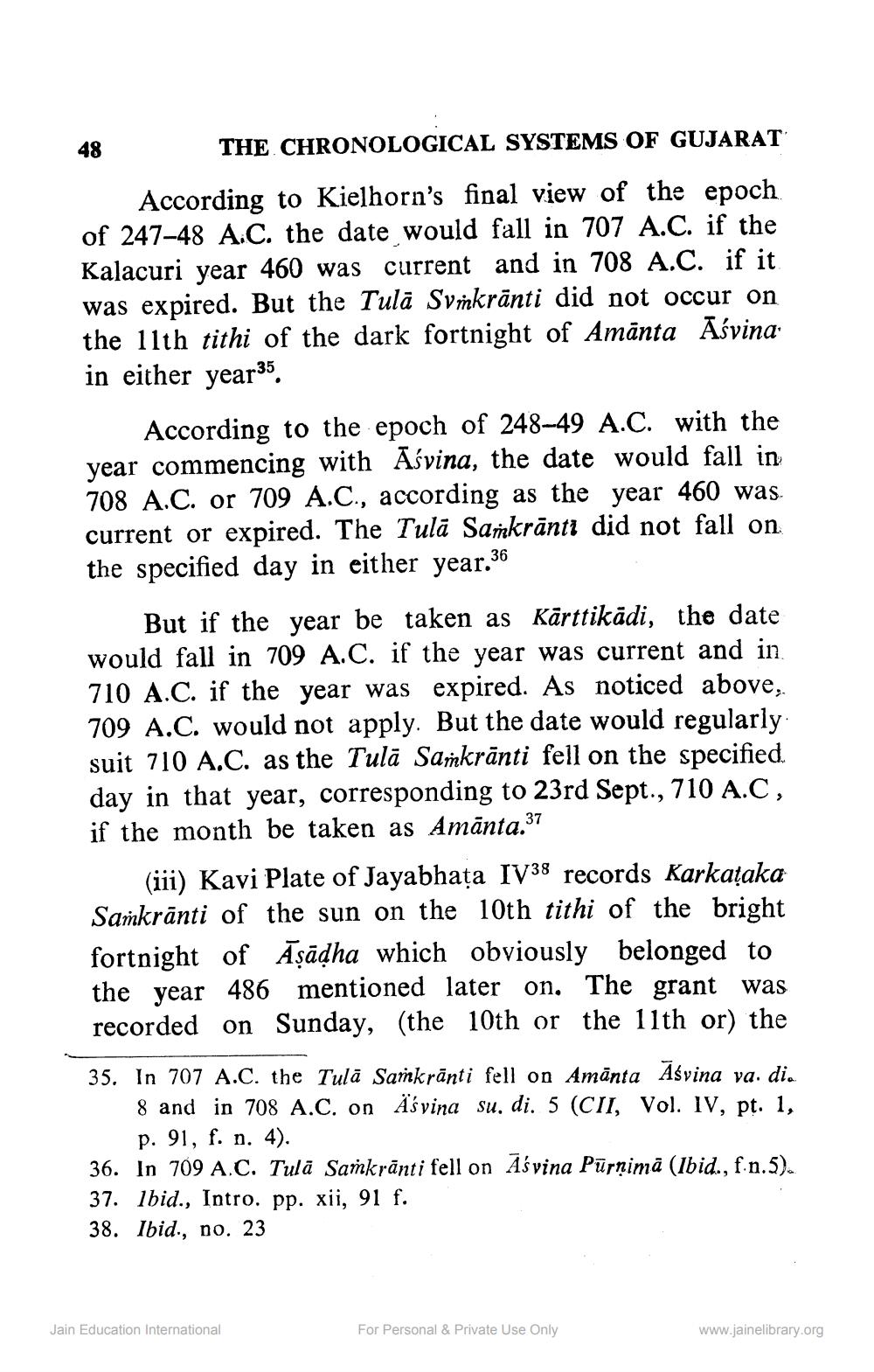________________
48
THE CHRONOLOGICAL SYSTEMS OF GUJARAT According to Kielhorn's final view of the epoch. of 247–48 A.C. the date would fall in 707 A.C. if the Kalacuri year 460 was current and in 708 A.C. if it was expired. But the Tulā Svmkrānti did not occur on the 11th tithi of the dark fortnight of Amānta Āśvina in either year35.
According to the epoch of 248-49 A.C. with the year commencing with Āśvina, the date would fall in 708 A.C. or 709 A.C., according as the year 460 was current or expired. The Tulā Samkrānti did not fall on the specified day in either year.36
But if the year be taken as Kārttikādi, the date would fall in 709 A.C. if the year was current and in 710 A.C. if the year was expired. As noticed above, 709 A.C. would not apply. But the date would regularly suit 710 A.C. as the Tulā Samkrānti fell on the specified. day in that year, corresponding to 23rd Sept., 710 A.C, if the month be taken as Amānta.37
(iii) Kavi Plate of Jayabhata IV38 records Karkataka Samkrānti of the sun on the 10th tithi of the bright fortnight of Āsādha which obviously belonged to the year 486 mentioned later on. The grant was recorded on Sunday, (the 10th or the 11th or) the
35. In 707 A.C. the Tulā Sankrānti fell on Amānta Aśvina va. di.
8 and in 708 A.C. on Äśyina su, di. 5 (CII, Vol. IV, pt. 1,
p. 91, f. n. 4). 36. In 709 A.C. Tulā Samkrānti fell on Aśvina Pūrnimā (ibid., f.n.5). 37. lbid., Intro. pp. xii, 91 f. 38. Ibid., no. 23
Jain Education International
For Personal & Private Use Only
www.jainelibrary.org




